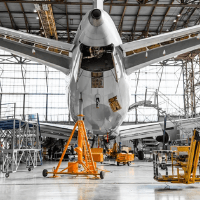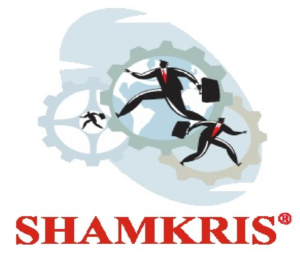Aerospace Industry
Aerospace Industry?
Aerospace is a term used to collectively refer to the atmosphere and outer space. Aerospace activity is very diverse, with a multitude of commercial, industrial and military applications. Aerospace engineering consists of aeronautics and astronautics. Aerospace organizations research, design, manufacture, operate, or maintain aircraft and spacecraft.
The beginning of space and the ending of the air is considered as 100 km (62 mi) above the ground according to the physical explanation that the air pressure is too low for a lifting body to generate meaningful lift force without exceeding orbital velocity.
Technological progress is the basis for competitiveness and advancement in the aerospace industry. The industry is, as a result, a world leader in advancing science and technology. Aerospace systems have a very high value per unit weight and are among the most complex, as measured by the number of components in finished products.
Consequently, it is economically and politically prestigious for a country to possess an aerospace industry. Among the world’s largest manufacturing industries in terms of monetary value of product output and employment, the aerospace industry is characterized by a relatively small number of large firms and numerous international partnerships at every level.
Aerospace

Manufacture of air and spacecraft and related machinery

Repair and maintenance of aircraft and spacecraft
Role of Shamkris
A Project Report is a document that provides details on the overall picture of the proposed business. The project report gives an account of the project proposal to ascertain the prospects of the proposed plan/activity.
Shamkris will provide a Project report covering Industry License requirements, competitor analysis, Land requirements, machinery requirements, equipment requirements, and financial requirements.
Some of the areas covered in the project report are outlined below:
- Introduction
- Project Description
- Uses and Applications
- Market Survey
- Raw Materials
- Manufacturing Process
- Process Description
- Process Flow Diagram
- Plant Layout
- Details of Plant & Machinery
- Suppliers of Raw Materials
- Suppliers of Plant & Machinery
- Plant Location Factors
- Land & building Required
- Power and Water Required
- Details of Manpower Required
- Financials of the Project
- License and application Certificate
Financials of the Project includes:
- Land and Building Costs
- Plant and Machinery Costs
- Other Fixed Assets
- Fixed Capital Investment
- Raw Material Costs
- Salaries and Wages
- Total Working Capital
- Cost of Project
- Total Capital Investment
- Cost of Production
- Turnover per Annum
- Profitability Analysis
- 5-year Profit Analysis
- Break-even Point
- Resources of Finance
- Cash Flow Statement
- Projected Balance Sheet
FAQ
- Mechanical Engineer. …
- Aircraft/Spacecraft Designer. …
- Data Processing Manager. …
- Military Aerospace Engineer. …
- Inspector and Compliance Officer. …
- Drafter. …
- Aerospace Technician. …
- Mission or Payload Specialist.
There’s no doubt that the Aerospace and Defense industry is strategic to the global economy. Since the first powered flight in 1903, the industry has grown by leaps and bounds. The industry in the U.S. nearly accounted for $909 billion in sales in 2019, while in Europe the total turnover was over 250 billion euros.
